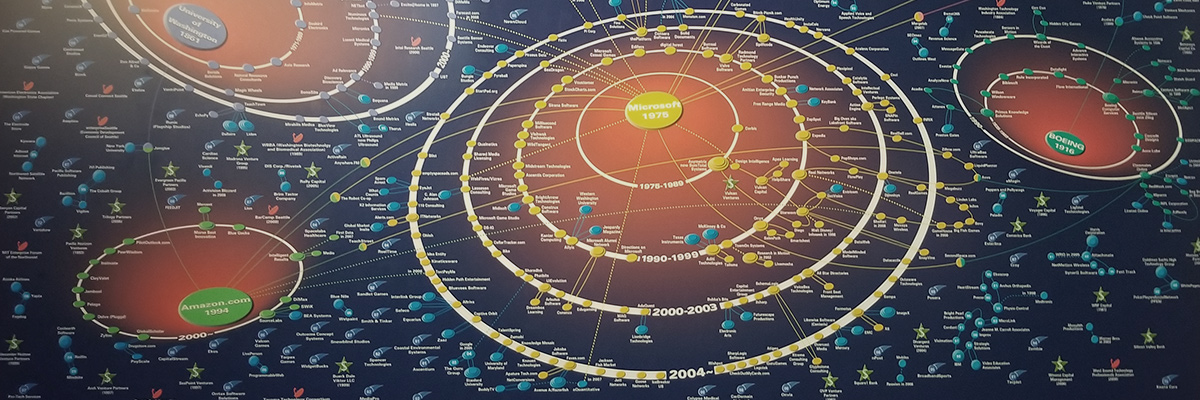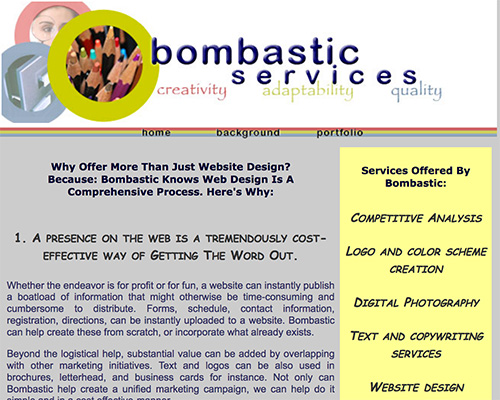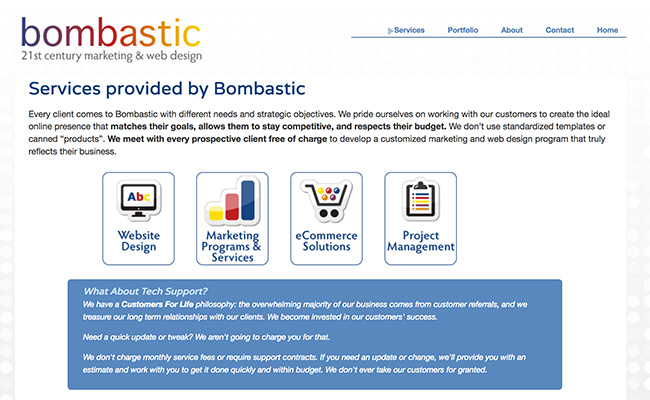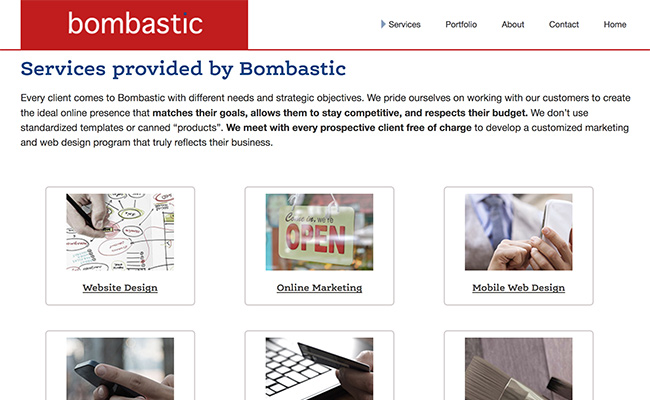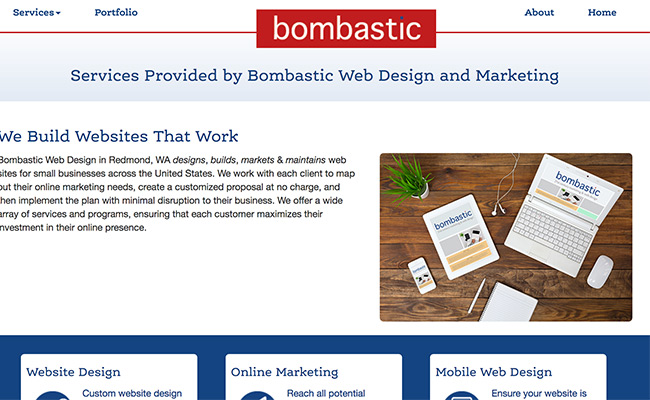Taking the first step towards a large goal – whether it be starting a new business or creating a non-profit or launching a new product – is a rush of adrenaline. While butterflies in your stomach might not be fun, that spark of energy is recognized as the push human beings need to move past our fears. It gets us started. Then plans are developed, websites launched, data studied, and programs refined. Over time, we move into the “normal course of business” and the months turn to years.
And then, before we know it, the digital tools and technology we chose to support our goals are no longer performing the way we need. While we are busy managing all the various aspects of our business, Moore’s law and technology revolutions change the landscape under our feet. Here at Bombastic, we’ve taken on clients that have “woken up” to discover their website is obsolete. It can be a rude awakening that quickly turns into a crisis.
Taking the time to anticipate the wave of technological change is a core mission for our team. As just one example, we are currently rebuilding a site for a long time client after we realized the coding platform they are on has a risky long term outlook (gonna miss you ColdFusion). And we know we have to keep an eye on the horizon beyond just websites. Old digital marketing tools can become obsolete or might begin causing unintended consequences like hurting search engine rankings.
We learned from experience.
We know this is difficult, because we have lived it. Over the course of our history, we’ve had seven versions of our website. As bandwidth sped up, we’ve adjusted our photos and then added video. As smartphones got faster, we changed our coding framework (multiple times). And as the Google algorithm gained importance, we reorganized our content to match. We are with you – keeping ahead of the wave of change can feel like a daunting task.
The only way to fight tech fatigue is to anticipate and plan for change. Here are some simple ways you can get ahead of the wave.
Three tips to help your organization manage technological change.
• Understand that tools and technology are separate from your mission.
The technology we use in our businesses today can become so integrated with what we do, we can forget they are the vehicle not the destination. That business plan we keep telling you to develop? Keep it refreshed at least annually so you can keep perspective. By keeping your business mission as your north star, you will avoid updating your technology for the technology’s sake.
• Identify which tools are mission critical
Not every investment has the same return, especially when it comes to technology. By taking some time to proactively identify which systems are critical, you can focus your energy better. Are you dependent on email newsletters (and their open rates) to generate customer leads? Do social media platforms help you provide timely customer support? Does the Contact page on your website drive foot traffic to your business? Identify the critical tools and then you’ll be able to focus your time on keeping up to date in those areas.
• Network to continuously learn.
You can’t update your tools if you don’t realize that innovation has happened. Not every business can afford to dedicate head count to technology research. Instead, we suggest you multi-task.
- Join industry and community groups that not only provide sales leads but also have guest speakers on topics like tech tools.
- When you are keeping an eye on your competition, keep an eye on their tools. You don’t want to mimic them, but you can certainly learn from them.
- Just ask. Ask one simple question when you conclude a meeting. From your accountant to electrician – and especially your web designer – ask a simple “Have you tried any new tech products that have worked well for you?” It takes five minutes and will quickly expand your knowledge.
In the end, realize that as much as we are surrounded by technology, it is the actual interactions with people that matter most. Websites are merely a substitute. If you have time, read “The Revenge of Analog: Real Things and Why They Matter” by David Sax. Put a vinyl record on, perhaps, while you turn the pages. As he puts it:
“A funny thing has happened on our way to the digital utopia: we find ourselves increasingly missing reality.”
David Sax, “The Revenge of Analog”


